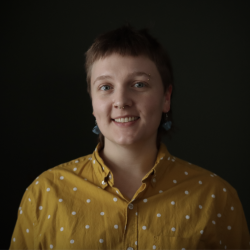
Are you and your partner in need of a up for a better understanding about the status of your relationship? We inspect our cars every year, but forget to reevaluate our relationships as time goes by. No matter how long you have been with your partner or what type of relationship you choose to be in, the activity can help you see where you are at in your current space and then define where you would like to be.
Couples Counseling Sculpting Exercise:
Taking turns, one partner will sculpt the other as if they are made of clay and completely malleable. Position your partner into a shape of the way you see them. It may be intimidating, but there is no right or wrong way to complete the sculpt. Every couple is unique and each person within the couple has their own perspective.
A lot of emotions will come up during this activity. At first it may seem silly and uncomfortable, but once you hold the sculpt it can bring up your underlying feelings about what it feels like for each of you in this relationship. The purpose of the sculpt is to facilitate communication through the visualization of the space and energy present between you and your partner.
Couples Counseling Sculpting Examples:
If you feel really close to your partner you may place yourself sitting together, hugging. An example of someone feeling like the other blames them a lot could be positioning them as standing with their arm and finger pointed out towards you. After you have them in the place that feels most true to your experience of the person, position yourself in reference to them how you feel. Hold this for 1 minute without talking.
________________________________________________________________________
Following the activity, ask yourself these questions. If you feel comfortable push yourself to discuss them with your partner.
- How did you decide who went first?
- How similar or different were each of your perspectives?
- What did you learn about yourself?
- What did you learn about your partner?
- What roles did each of you play for the other one?
- Supportive equals
- One above the other showing a power difference
- One person smaller more like parent/child
- Distancer/pursuer
- Withdrawn
- So close you look like one
- How much space was between you? Why do you think this happened?
- Were you touching? What does the touch imply?
- Where were you looking?
- What did your body feel like in the position you were in?
- What do you feel in your body now?
- What feelings were brought up for you?
- When have you felt this way before?
- What was challenging?
- What came easily for you?
- What made sense about your partner’s perspective?
- What still confuses you?
Now switch partners and repeat. Hold for 1 minute and then review the same questions from the second partner's perspective.
After each partner has gone and you have asked yourselves the questions. Position your partner the way it felt you first met. Hold for 1 minute each, then review the questions.
__________________________________________________________________________
Finally, position your partner the way you would like their relationship to be. This represents the ideal image of how you would like your relationship to be. Hold this position for 1 minute. Switch partners and repeat.
- How have sculpts evolved?
- From when you met to the current sculpt?
- Current to ideal?
- When you first met to the ideal?
- What has shifted over time?
- How have different life events
 restructured your sculpt?
restructured your sculpt? - What emotional reactions came up with each phase?
- What are ways each of you can work towards your ideal?
- How similar or different are each of your perspectives? Why is that?
- What feels challenging?
- What feels achievable?
___________________________________________________________________________
Advanced sculpting couples exercise:
If you can take a video recording of yourselves in the process, watching yourselves do this activity will give you an objective look into your dynamic.
Another exercise can give you a deeper understanding of the interactive dance that plays out in your relationship. Each partner takes a turn playing their partner's role by acting out movements, but still without talking. This can show you even more about the give and take that takes place between you and your partner.
Healthy couples tend to have more flexibility in the roles that they play as different stressors impact them, whereas couples who are struggling may find themselves reacting in the same negative patterns no matter what problem they face. These roles may have worked for you in the past, but have lost their effectiveness over time or across different situations. If you find this to be true of your relationship, it would be beneficial to see a professional to shake up your cycle and help you step out of the rigid roles you participate in to find better solutions in the future.
If you are struggling and want help, you can self schedule an inperson or a virtual couples therapy appointment at The Center for Growth Therapy Offices in PA, NJ, VA, GA, NM, FL or call 215 922 5683 x 100
- Ocean City Therapy Office
360 West Ave, Floor 1, Ocean City, NJ 08226 - Mechanicsville Therapy Office
9044 Mann Drive, Mechanicsville Virginia, 23116 - Alpharetta Office
11720 Amber Park Drive, Suite 160, Alpharetta GA 30006 - Society Hill Therapy Office
233 S. 6th Street, C-33, Philadelphia PA 19106 - Art Museum / Fairmount Therapy Office
2401 Pennsylvania Ave, Suite 1a2, Philadelphia PA 19130 - Santa Fe Therapy Office, 2204 B Brothers Road, Santa Fe, New Mexico, 87505
- Telemedicine: We have therapists who are licensed to work in Florida, Georgia, New Jersey, Virginia New Mexico and Pennsylvania
Therapy and Counseling Services Offered in Philadelphia, Ocean City, Mechanicsville, Santa Fe:
Individual Counseling and therapy
Couples Counseling and marriage counseling
Teen Therapy and Adolescent Therapy and tweens and child counseling
Family Therapy and multi-generational counseling
Art Therapy and Counseling no art skills needed
ADHD Therapyand ADD, Dyslexia, Autism, Tourettes counseling
Anxiety, Panic, OCD Therapy and worry and fear support
Breaking the cycle of Codependency and being your own person
Overcoming Chronic Illness and Chronic Pain .
Depression Therapy and sadness, gloom, and upset support
- Functional Neurological Disorder (FND) Therapy is a particular style of therapy designed for people with problems affecting their nervous system, how the brain and body send and receive signals.
Grief Therapy and loss, End of A Relationship, rejections, pregnancy and loss and therapy
Mindfulness Based Therapy and spirituality based therapy
- Narcissistic Abuse Recovery child of, parent of, spouse of, sibling of a narcissist.
Sex Therapy and sexual function & dysfunction, sex addiction, sexual orientation and gender identity support
Shame and Blame
Trauma Therapy both emotional and sexual abuse, complex trauma, PTSD counseling
Divorce support
Affairs, Infidelity, Unfaithful, Cheating counseling
Parenting therapy
Personality disorder treatments
Anger Management Therapy
Setting Boundaries and identifying ones own Core Beliefs
Just name some of the Mental Health issues that we work with. Our goal is to help you Change and Achieve Your Dreams
























